Commutative Property and Associative Property
Table Of Contents
🎬 Math Angel Video: Commutative and Associative Laws
What is the Commutative Property?
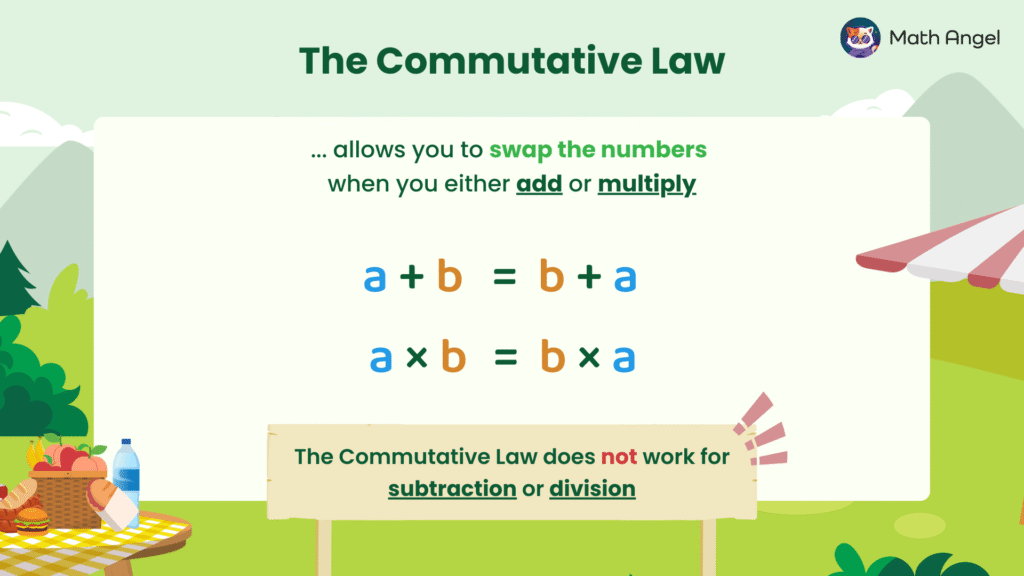
⏩️
🛎️ Definition of Commutative Property:
The Commutative Property says you can swap the numbers when you add or multiply, and the answer stays the same.
$$ a+b=b+a $$
$$ a \times b = b \times a $$
🚨 Important: The Commutative Property does not work for subtraction or division.
How to Use the Commutative Property (Examples)?
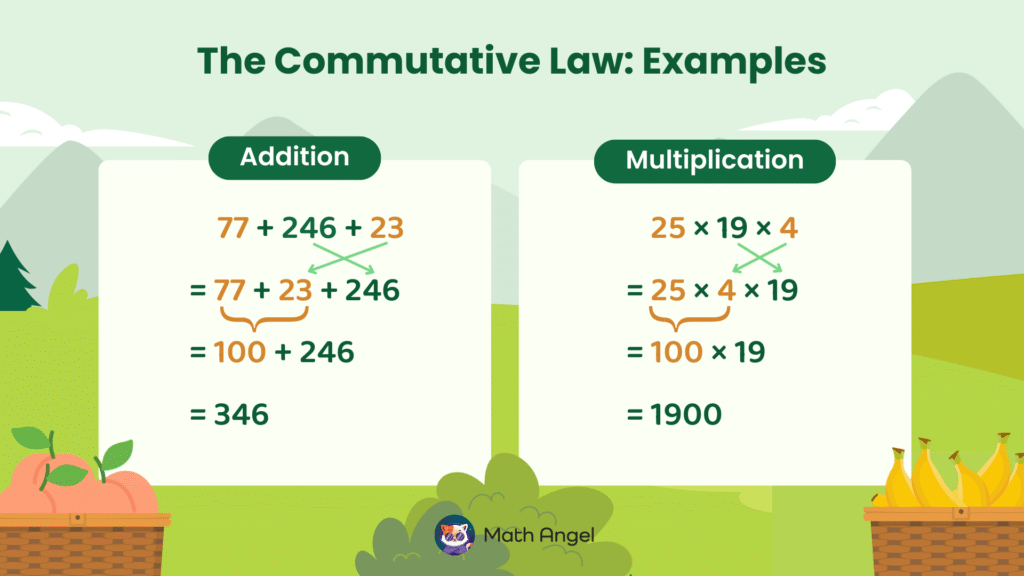
⏩️
🛎️ Addition Example:
- Start with:
$77 + 246 + 23$ - Use the Commutative Property to swap 246 and 23:
$77 + 23 + 246$ - Add 77 and 23 first:
$100 + 246$ - Final answer:
$346$
🛎️ Multiplication Example:
- Start with:
$25 \times 19 \times 4$ - Use the Commutative Property to swap 19 and 4:
$25 \times 4 \times 19$ - Multiply 25 and 4 first:
$100 \times 19$ - Final answer:
$1900$
What is the Associative Property?
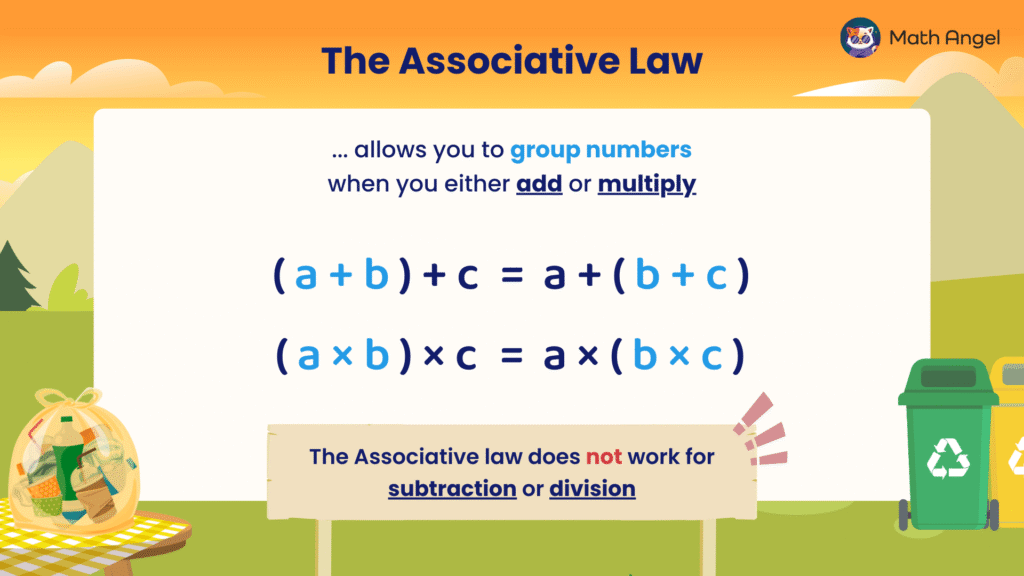
⏩️
🛎️ Definition of Associative Property:
The Associative Property allows you to group numbers differently when you add or multiply, without changing the final answer.
$$(a+b)+c = a+(b+c)$$
$$(a \times b) \times c = a \times (b \times c)$$
🚨 Important: The Associative Property does not work for subtraction or division.
When to Use the Associative Property (Examples)?
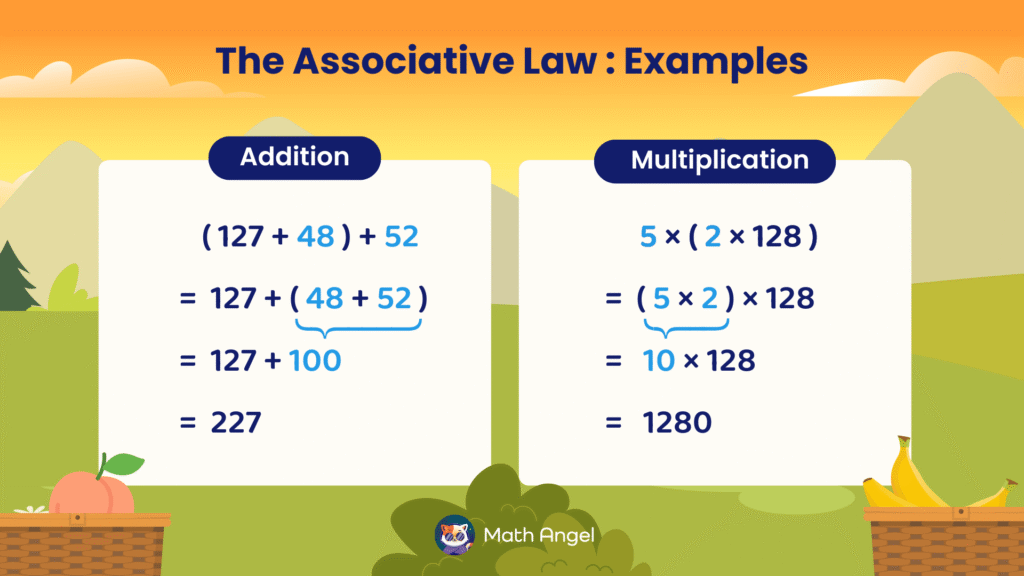
⏩️
Use the Associative Property when you want to group numbers differently to make calculations easier.
You can only use it when the expression has only addition or only multiplication.
🛎️ Addition Example:
- Start with:
$(127+48)+52$ - Use the Associative Property to regroup $48$ and $52$ because they add up to $100$, making the addition simpler:
$127+(48+52)$ - Add inside the brackets first:
$127+100$ - Final answer:
$227$
🛎️ Multiplication Example:
- Start with:
$5 \times (2 \times 128)$ - Use the Associative Property to regroup $5$ and $2$ because they multiply to $10$, making the multiplication simpler:
$(5 \times 2) \times 128$ - Multiply inside the brackets first:
$10 \times 128$ - Final answer:
$1280$
How to Combine the Commutative and Associative Properties?
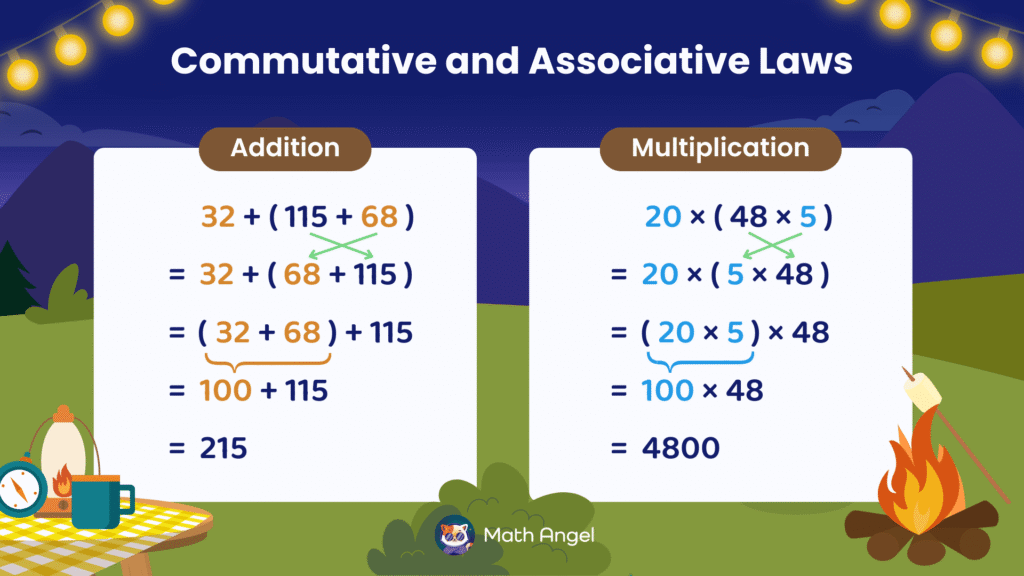
⏩️
Sometimes, you can combine the Commutative and Associative Properties to make calculations even easier!
- Use the Commutative Property to rearrange numbers.
- Then use the Associative Property to regroup numbers smartly.
This helps you pick easier pairs to add or multiply first.
🛎️ Addition Example:
- Start with:
$32 + (115 + 68)$ - Step 1: Use the Commutative Property to swap $115$ and $68$:
$32 + (68 + 115)$ - Step 2: Use the Associative Property to regroup $32$ and $68$, because $32 + 68$ makes $100$, an easy number to add:
$(32 + 68) + 115$ - Step 3: Add inside the brackets first:
$100 + 115$ - Final answer:
$215$
🛎️ Multiplication Example:
- Start with:
$20 \times (48 \times 5)$ - Step 1: Use the Commutative Property to swap $48$ and $5$:
$20 \times (5 \times 48)$ - Step 2: Use the Associative Property to regroup $20$ and $5$, because $20 \times 5$ makes $100$, an easy number to multiply:
$(20 \times 5) \times 48$ - Step 3: Multiply inside the brackets first:
$100 \times 48$ - Final answer:
$4800$
🍪 Quiz: Practice with Commutative and Associative Properties
🎩 Stuck on Math Calculations? Try AI Math Solver
Need math help? Chat with our AI Math Solver at the bottom right — available 24/7 for instant answers.

